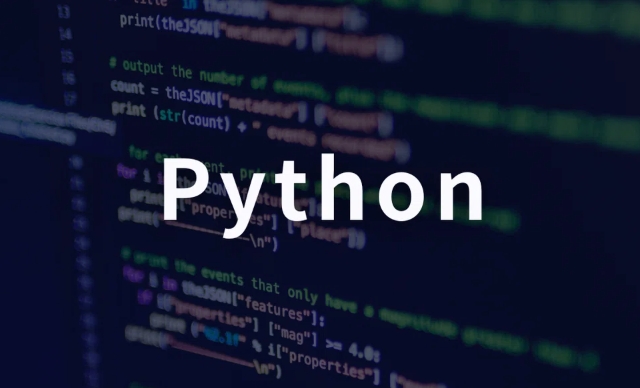Whether to use __slots__ depends on the scenario. 1. Using __slots__ when creating a large number of objects can significantly reduce memory usage; 2. If you want to prevent __slots__ from being used to improve code security when adding properties dynamically; 3. Pay attention to the influence of the parent class, the inability to use __dict__ and the restrictions that may conflict with third-party libraries; 4. If you do not need to use small scripts or dynamic properties, you need them.

Using __slots__ in Python classes can bring performance and memory optimization, but not all cases require it. Its main function is to limit the properties that an instance of a class can have and reduce memory usage. Whether to use __slots__ depends on your usage scenario.

Here are some common applicable situations and suggestions:
1.When you create a large number of objects
If your application creates thousands of instances of a certain class, such as processing data models, minion units in the game, log entries, etc., then using __slots__ can significantly reduce memory overhead.

Python maintains a __dict__ property for each instance by default, and this dictionary structure itself takes up a lot of space. After using __slots__ , these properties will be stored more compactly, saving memory.
example:

class Point:
__slots__ = ('x', 'y')
def __init__(self, x, y):
self.x = x
self.y = y Compared with the version without adding __slots__ , this writing can significantly reduce memory consumption when creating 100,000 or even millions of points.
2. When you want to prevent dynamic addition of attributes
Sometimes you don't want the instance of the class to be added at will, such as for the maintainability of the code or to avoid bugs caused by typos.
When __slots__ is not added, the user may operate incorrectly:
p = Point(1, 2) pz = 3 # No error is reported, but the logic may be errored
If __slots__ is defined and 'z' is not included, the above line of code will directly throw an exception and find the problem in advance.
Situations suitable for this need include:
- Data model classes (such as entities in ORM)
- Data containers for configuration classes or fixed structures
- Public API interface parameter object
3. Pay attention to places that cannot be used casually
Although __slots__ has many benefits, there are some limitations to pay attention to:
- If the parent class uses
__slots__, the subclass must also be handled carefully, otherwise the expected results may not be achieved. - Classes that use
__slots__can no longer have dynamic properties, and they cannot use__dict__and__weakref__(unless explicitly declared). - Some frameworks (such as some serialization libraries or debugging tools) rely on
__dict__and may be handled unfriendly to__slots__class.
So before deciding to use it, first confirm whether it will affect the third-party library or debugging method you are using.
4. When can I not use it?
If you just write a small script, tool class, or just create a small number of objects, there is actually no need to use __slots__ . At this time, a clear code structure is more important than this performance improvement.
Also, if you do need to add properties dynamically, don't think about it at all.
Basically that's it. To sum up, use __slots__ in scenarios where a large number of objects or attributes need to be restricted, and keep it simple at other times.
The above is the detailed content of When to use __slots__ in a Python class?. For more information, please follow other related articles on the PHP Chinese website!

Hot AI Tools

Undress AI Tool
Undress images for free

Undresser.AI Undress
AI-powered app for creating realistic nude photos

AI Clothes Remover
Online AI tool for removing clothes from photos.

Clothoff.io
AI clothes remover

Video Face Swap
Swap faces in any video effortlessly with our completely free AI face swap tool!

Hot Article

Hot Tools

Notepad++7.3.1
Easy-to-use and free code editor

SublimeText3 Chinese version
Chinese version, very easy to use

Zend Studio 13.0.1
Powerful PHP integrated development environment

Dreamweaver CS6
Visual web development tools

SublimeText3 Mac version
God-level code editing software (SublimeText3)
 PHP calls AI intelligent voice assistant PHP voice interaction system construction
Jul 25, 2025 pm 08:45 PM
PHP calls AI intelligent voice assistant PHP voice interaction system construction
Jul 25, 2025 pm 08:45 PM
User voice input is captured and sent to the PHP backend through the MediaRecorder API of the front-end JavaScript; 2. PHP saves the audio as a temporary file and calls STTAPI (such as Google or Baidu voice recognition) to convert it into text; 3. PHP sends the text to an AI service (such as OpenAIGPT) to obtain intelligent reply; 4. PHP then calls TTSAPI (such as Baidu or Google voice synthesis) to convert the reply to a voice file; 5. PHP streams the voice file back to the front-end to play, completing interaction. The entire process is dominated by PHP to ensure seamless connection between all links.
 How to use PHP combined with AI to achieve text error correction PHP syntax detection and optimization
Jul 25, 2025 pm 08:57 PM
How to use PHP combined with AI to achieve text error correction PHP syntax detection and optimization
Jul 25, 2025 pm 08:57 PM
To realize text error correction and syntax optimization with AI, you need to follow the following steps: 1. Select a suitable AI model or API, such as Baidu, Tencent API or open source NLP library; 2. Call the API through PHP's curl or Guzzle and process the return results; 3. Display error correction information in the application and allow users to choose whether to adopt it; 4. Use php-l and PHP_CodeSniffer for syntax detection and code optimization; 5. Continuously collect feedback and update the model or rules to improve the effect. When choosing AIAPI, focus on evaluating accuracy, response speed, price and support for PHP. Code optimization should follow PSR specifications, use cache reasonably, avoid circular queries, review code regularly, and use X
 python seaborn jointplot example
Jul 26, 2025 am 08:11 AM
python seaborn jointplot example
Jul 26, 2025 am 08:11 AM
Use Seaborn's jointplot to quickly visualize the relationship and distribution between two variables; 2. The basic scatter plot is implemented by sns.jointplot(data=tips,x="total_bill",y="tip",kind="scatter"), the center is a scatter plot, and the histogram is displayed on the upper and lower and right sides; 3. Add regression lines and density information to a kind="reg", and combine marginal_kws to set the edge plot style; 4. When the data volume is large, it is recommended to use "hex"
 PHP integrated AI emotional computing technology PHP user feedback intelligent analysis
Jul 25, 2025 pm 06:54 PM
PHP integrated AI emotional computing technology PHP user feedback intelligent analysis
Jul 25, 2025 pm 06:54 PM
To integrate AI sentiment computing technology into PHP applications, the core is to use cloud services AIAPI (such as Google, AWS, and Azure) for sentiment analysis, send text through HTTP requests and parse returned JSON results, and store emotional data into the database, thereby realizing automated processing and data insights of user feedback. The specific steps include: 1. Select a suitable AI sentiment analysis API, considering accuracy, cost, language support and integration complexity; 2. Use Guzzle or curl to send requests, store sentiment scores, labels, and intensity information; 3. Build a visual dashboard to support priority sorting, trend analysis, product iteration direction and user segmentation; 4. Respond to technical challenges, such as API call restrictions and numbers
 python list to string conversion example
Jul 26, 2025 am 08:00 AM
python list to string conversion example
Jul 26, 2025 am 08:00 AM
String lists can be merged with join() method, such as ''.join(words) to get "HelloworldfromPython"; 2. Number lists must be converted to strings with map(str, numbers) or [str(x)forxinnumbers] before joining; 3. Any type list can be directly converted to strings with brackets and quotes, suitable for debugging; 4. Custom formats can be implemented by generator expressions combined with join(), such as '|'.join(f"[{item}]"foriteminitems) output"[a]|[
 python connect to sql server pyodbc example
Jul 30, 2025 am 02:53 AM
python connect to sql server pyodbc example
Jul 30, 2025 am 02:53 AM
Install pyodbc: Use the pipinstallpyodbc command to install the library; 2. Connect SQLServer: Use the connection string containing DRIVER, SERVER, DATABASE, UID/PWD or Trusted_Connection through the pyodbc.connect() method, and support SQL authentication or Windows authentication respectively; 3. Check the installed driver: Run pyodbc.drivers() and filter the driver name containing 'SQLServer' to ensure that the correct driver name is used such as 'ODBCDriver17 for SQLServer'; 4. Key parameters of the connection string
 python pandas melt example
Jul 27, 2025 am 02:48 AM
python pandas melt example
Jul 27, 2025 am 02:48 AM
pandas.melt() is used to convert wide format data into long format. The answer is to define new column names by specifying id_vars retain the identification column, value_vars select the column to be melted, var_name and value_name, 1.id_vars='Name' means that the Name column remains unchanged, 2.value_vars=['Math','English','Science'] specifies the column to be melted, 3.var_name='Subject' sets the new column name of the original column name, 4.value_name='Score' sets the new column name of the original value, and finally generates three columns including Name, Subject and Score.
 Optimizing Python for Memory-Bound Operations
Jul 28, 2025 am 03:22 AM
Optimizing Python for Memory-Bound Operations
Jul 28, 2025 am 03:22 AM
Pythoncanbeoptimizedformemory-boundoperationsbyreducingoverheadthroughgenerators,efficientdatastructures,andmanagingobjectlifetimes.First,usegeneratorsinsteadofliststoprocesslargedatasetsoneitematatime,avoidingloadingeverythingintomemory.Second,choos






